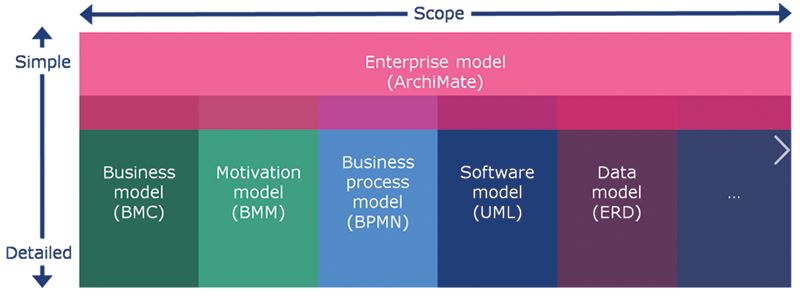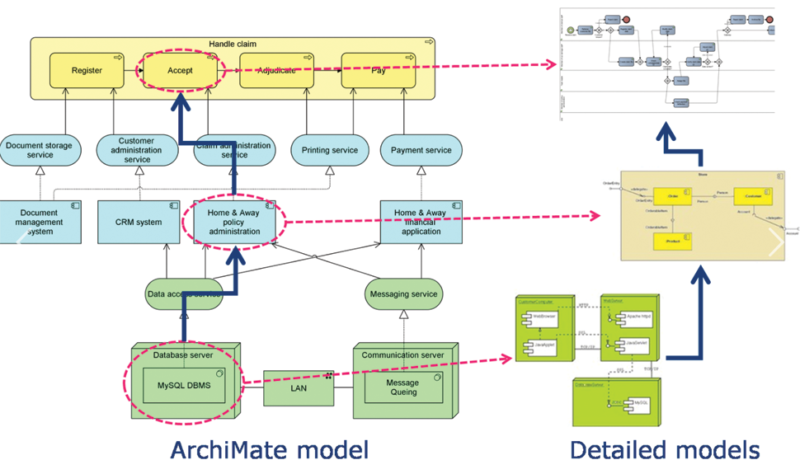The ArchiMate language is not intended to replace other standards and modeling approaches. For many domains, there are languages and techniques available that provide more detailed descriptions. Those languages, such as UML, BPMN and others, have a narrower scope (e.g. UML for specifying software, BPMN for business processes) than ArchiMate, but they lack concepts for relating these to other domains. Figure 1 below depicts this.

Figure 1: Enterprise architecture model connecting other models.
This is where ArchiMate adds value. First of all, you need a broad, less detailed description to have a general overview of your enterprise, in order to see the dependencies between different aspects and areas, and avoid drowning in details.
Moreover, as Figure 1 also shows, there is some overlap between ArchiMate and these other techniques. For example, the ArchiMate concept of Application Component is largely identical to UML’s Component concept. This allows you to connect ArchiMate models to models for these individual domains, so you can zoom in on specific parts of the enterprise architecture by drilling down into these other models.
This provides you with an integrated description of the enterprise that relates (sub)models from formerly separate domains in a meaningful way (as in Figure 2 below). This way, you can analyze and define the dependencies between desired business outcomes, products and processes, IT systems, data, projects and programs, and other aspects of your enterprise, all within one environment. This is very important in realizing your business strategy: a clear line-of-sight between all the elements of your enterprise, with a single source of truth (instead of disparate modeling silos), efficient analysis of the impact of management decisions, and easy collaboration between the different experts that work on designing and changing your enterprise.

Figure 2: Linking an ArchiMate model to detailed models to provide traceability.
In the following blogs we will describe how ArchiMate 3.0 can be related to several specific existing languages and techniques. We will also show you how Enterprise Studio supports this. The next blog will focus on combining ArchiMate with management-oriented techniques such as the Business Motivation Model, Balanced Scorecard and Business Model Canvas. In later blogs, we will also discuss UML, BPMN, ERDs and other techniques.